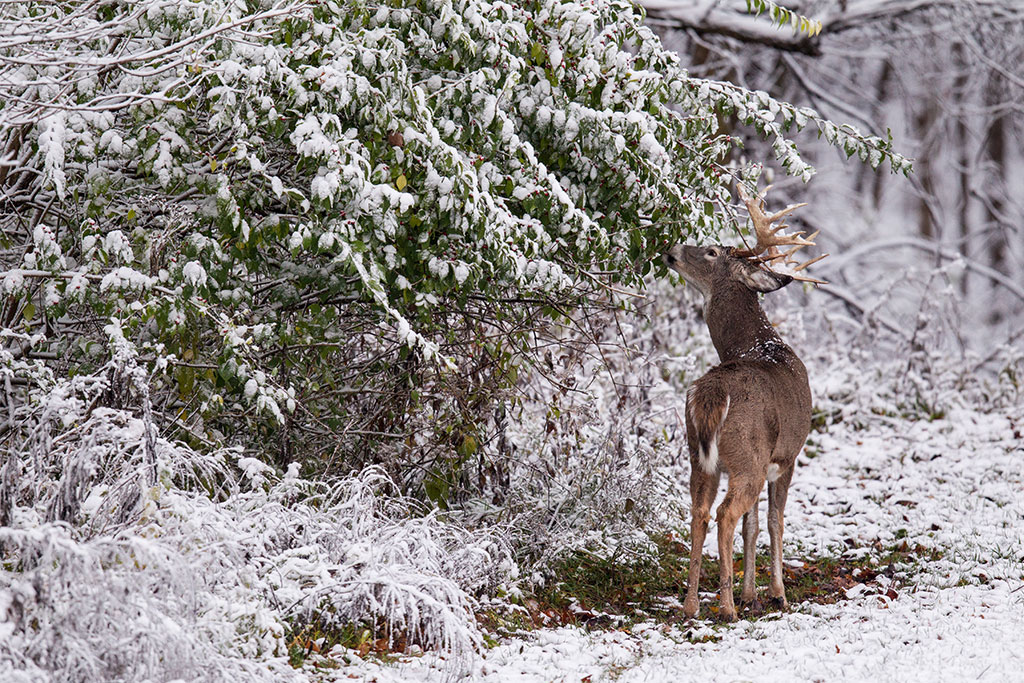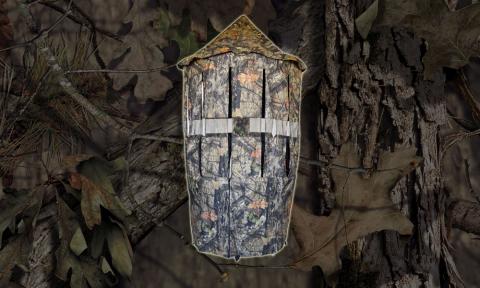Todd Amenrud
It doesn’t matter if you have the best food plots in your state, whitetails still must have browse species. So why not make your native plants work for you, too? There are things we can do to create more and better native foods, make them more nutritious, and help them to transfer maximum nutrients from the soil to your herd; there it’s turned into “antler and energy.”

1. Fire
Fire is a great way to help create “early successional growth” in certain habitat types. Rather than tough, woody plants that are difficult for whitetails to digest, we want succulent, “leafy” plants that, not only contain good nutrient levels, but can also be easily broken down and utilized by their digestive system. Fire creates better plant diversity, makes available new nutrients, removes forest and plant litter (fuel for bad wildfires), and establishes better quality, more easily digested browse species.
2. Disturb the Soil
Disking or disturbing the soil through shallow tillage also stimulates the growth of early successional native growth. It helps control more woody, brush species that aren’t as digestible as the new, tender growth will be. This doesn’t have to be done in one large area like a food plot; “strip disking” is popular with many gamekeepers.
3. Mowing
Mowing, just like fire or disking, will help to promote early successional growth. Mowing is not my favorite tactic if it’s used alone, but if you use it in conjunction with some of these other tactics and mow in stages, it can improve the area. Just make sure NOT to mow during nesting or fawning time. Just like “strip-disking,” mow in strips but if possible, don’t mow in straight lines – meander these strips in different directions to prevent a straight-line view for predators and to give varying plant communities different angles to the sun. Not only does this set back woody plants, it helps to disperse grass seeds.
4. Fertilizing
Fertilizing – that’s right, fertilize your native areas! Again – the plants are “transfer agents.” If the nutrients aren’t in the soil to begin with what will your plants convey? Some large properties will fertilize large, wild areas with helicopters or planes. Deer are attracted to these natural foods because of the improved nutrition and taste of the fertilized plants. It is a great idea to fertilize the areas that you’re disking or mowing because the early successional growth makes for a great means to transfer nutrients to your herd.
5. Remove Undesirable Plants
Release mast producing trees/plants by removing undesirable plants that may be competing against them. Deer love acorns, but beech, chestnut and hickory nuts, or soft mast like pears, persimmon, crabapple, honey locust, raspberry, or of course apples, are all deer favorites. You don’t want your mast producers in competition with anything else.
6. TSI (Timber Stand Improvement)
Timber stand improvement (TSI) can involve many tactics, but just reducing the tree density can greatly increase the availability of browse species. Simply put, it’s just like reducing the weed competition in a food plot. It allows for the plants/trees you leave behind to gain all the benefit of the sunlight, nutrients and moisture. An uncomplicated way of looking at this is to basically remove the undesirable species and leave the attractive ones.
7. Herbicides
Herbicides, whether selective or non-selective, can be used to create early successional habitat. Herbicides can decrease the dominance of certain, undesired plants (like some grasses), setting them back to allow for the return or introduction of more forbs.
Herbicides can also be used for suppression, or to “slow down” certain species. In this case you would want to use non-lethal rates. You want to “injure” the established plant (oftentimes grasses) not completely kill them. The big benefit to herbicide control is it minimizes soil disturbance. In plant communities where soil integrity is critical, or wherever erosion might be a problem, herbicides can be a good choice.




























